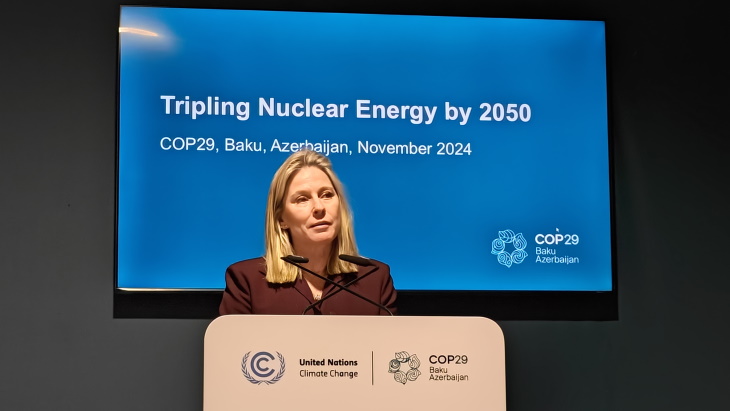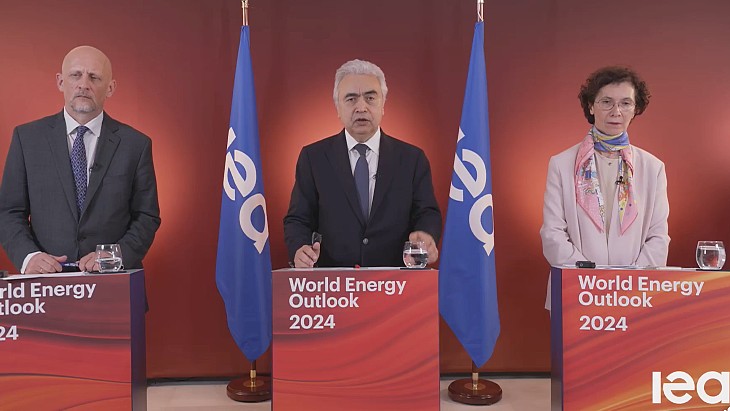Green Ribbon Panel provides roadmap for policymakers
.jpg)
"Fighting climate change and growing our economy are absolutely possible if we use proven solutions and innovation to our full advantage," said Bruce Power's James Scongack, who is chair of the Green Ribbon Panel. "We believe the practical recommendations we have developed from a diverse set of leaders presents a real opportunity for greater national unity and immediate next steps towards reducing emissions, while growing the economy in a challenging pandemic environment."
The Green Ribbon Panel was created in February to mobilise business and civic leaders to participate in the climate policy discussions and to provide a forum for sharing ideas, lessons and best practices. Its report, Clean Air, Climate Change and Practical, Innovative Solutions: Policy Enabled Competitive Advantages Tuned for Growth, highlights the need for strong, innovative policies in the urgent fight against climate change while advancing growth opportunities for an economy challenged by the COVID-19 pandemic. The report focuses on Ontario but the solutions discussed can provide a pathway to improve the energy system for the health and prosperity of the whole country, its authors said.
Canadians want to act on climate change, the report notes, but to meet the 2030 climate targets and reduce GHG emissions in the rest of the economy, Ontario will need 25% more low-carbon emitting electricity. Electricity sector GHG emissions are projected to rise again due to a move to greater fossil-fuel based generation in the province, they add.
The solution, they say, is a combination of hydrogen, storage, and a "wires-and-pipes distribution infrastructure" - supported by nuclear generation - to form a smartly integrated solution for electrification. This would smooth out electricity demand, increase the efficient use of assets, enhance system flexibility and lower electricity costs, as well as build on Ontario's past successes of displacing coal with nuclear power.
The report sets out 10 immediate recommendations, the implementation of which could start over the next 18 months:
- Leverage Ontario's unique clean energy technologies and existing assets - nuclear and hydro - to reduce emissions and lower energy costs.
- Focus policy objectives on clear, short-term, tangible actions that prioritise targeted, proven, executable solutions, and that embrace the diversity of regions across Canada.
- Develop a pan-Canadian hydrogen solution that includes integration with the oil and gas sector, further deployment of hydrogen as a transportation fuel, and leverages Canada's clean electricity assets.
- Pursue electrification of the economy supplemented by the application of hydrogen technologies.
- Develop a Green Collar Jobs Strategy to underpin and develop, innovate and execute critical activities and projects.
- Establish Ontario's brand as a clean jurisdiction known for sustainable products.
- Leverage Ontario's regional status to maximise the benefits of sustainability policies.
- Engage federal financial institutions to enhance the economic contributions of Ontario's domestic advantages.
- Create a federal Next Generation Energy Innovation Fund to focus on the development of demonstration projects for Canada's future clean energy game-changer.
- Consider how future public revenue from carbon pricing policy schemes should be revenue-neutral to government and targeted at enhancing the competitiveness of trade-exposed sectors.
Scongack said: "The truth is, there isn't a silver bullet. Unity and focus on results and what works will be key to our success. What we need is a series of practical steps to begin in earnest that establish a foundation to be built upon [and] which cumulatively lead to the transformation we need."

_99697.jpg)








_50521.jpg)

